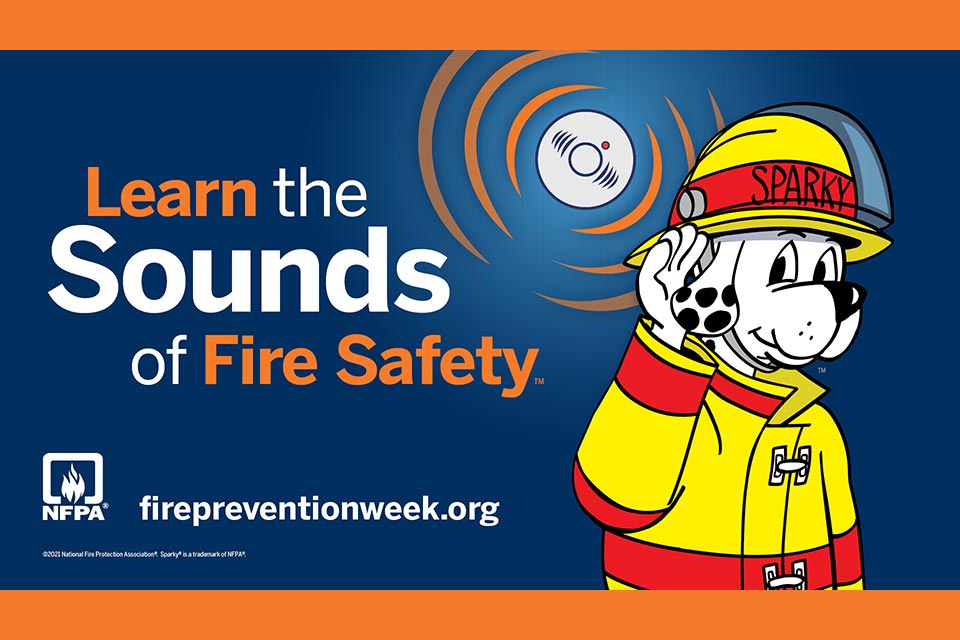October is Fire Prevention Month and This Year’s Theme is Learn the Sounds of Fire Safety!™
October is Fire Prevention Month and Shriners Children’s Boston is promoting the National Fire Protection Association (NFPA)’s campaign on burn awareness. This year’s campaign, “Learn the Sounds of Fire Safety!” works to educate everyone about the different sounds smoke and carbon monoxide alarms make. Knowing what to do when an alarm sounds will keep you and your family safe. When an alarm makes noises – a beeping sound or a chirping sound – you must take action.
“What do the sounds mean? Is there a beep or a chirp coming out of your smoke or carbon monoxide alarm? Knowing the difference can save you, your home, and your family,” said Lorraine Carli, vice-president of outreach and advocacy at NFPA.
Make sure everyone in the home understands the sounds of the alarms and knows how to respond. To learn the sounds of your specific smoke and carbon monoxide alarms, check the manufacturer’s instructions that came in the box, or search the brand and model online.
Smoke Alarms:
- A continued set of three loud beeps – beep, beep, beep – means smoke or fire. Get out, call 9-1-1, and stay out.
- A single “chirp” every 30 or 60 seconds means the battery is low and must be changed.
- All smoke alarms must be replaced after 10 years.
- Chirping that continues after the battery has been replaced means the alarm is at the end of its life and the unit must be replaced.
Carbon Monoxide (CO) Alarms
- A continuous set of four loud beeps – beep, beep, beep, beep – means carbon monoxide is present in your home. Go outside, call 9-1-1 and stay out.
- A single chirp every 30 or 60 seconds means the battery is low and must be replaced.
- CO alarms also have “end of life” sounds that vary by manufacturer. This means it’s time to get a new CO alarm.
- Chirping that continues after the battery has been replaced means the alarm is at the end of its life and the unit must be replaced. Make sure your smoke and CO alarms meet the needs of everyone in your home, including those with sensory or physical disabilities.
Keep these additional safety tips in mind:
- Install a bedside alert device that responds to the sound of the smoke and CO alarms. Use of a low frequency alarm can also wake a sleeping person with mild to severe hearing loss.
- There are smoke alarms and alert devices that alert people who are deaf or hard of hearing. These devices include strobe lights that flash to alert people when the smoke alarm sounds. Pillow or bed shakers designed to work with your smoke alarm also can be purchased and installed.
- Sleep with your mobility device, glasses and phone close to your bed.
- Keep pathways like hallways lit with night lights and free from clutter to make sure everyone can get out safely.
Learn more about Fire Prevention and this year’s theme Learn the Sounds of Fire Safety!”
Source: National Fire Prevention Association, 2021

Learning the sounds of fire safety can save lives.
Keep In Touch
Join our mailing list to stay up to date on everything that's happening at Shriners Children's.
